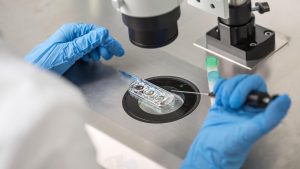Scientists have now been able to gain a greater understanding of the pain mechanisms involved with endometriosis.
A team of researchers from the University of Warwick and the University of Edinburgh in the UK have been able to show that immune cells called macrophages are associated with pain when looking at mouse models.
When looking at how the body responds to infection and inflammation, they found that there was a high concentration of macrophages located inside the lesions caused by endometriosis. It has been thought that instead of the body trying to remove the excess endometrial tissue, the macrophages activate processes that act as though they are trying to repair a wound, therefore the growth of lesions inadvertently encourages growth of the lesions and infiltration of blood vessels. Nerves will also grow into the endometriosis lesions, which has been through to be a large cause of the pain associated with the disease.
The scientists found that in response to the peritoneal fluid from women suffering from endometriosis, macrophages produced high levels of insulin-like growth factor-1 (IGF-1), a growth hormone which is vital for normal bone and tissue growth and development. They found that in women with endometriosis, not only was there a higher concentration of IGF-1 in their peritoneal fluid, but the higher the concentration, the greater the level of pain.
They were able to conclude that the growth hormone, IGF-1 produced by the macrophages in women with endometriosis will not only increase the growth of nerves in the endometrial lesions, but will also raise the expression of the genes responsible for processing pain, which will ultimately result in higher levels of pain.
Although this research hasn’t resulted in a cause or a cure for endometriosis, it certainly does shed light on how macrophages are central to the pain associated with the disease and as a result, it could pave the way to potentially finding a way to treat the debilitating condition.






